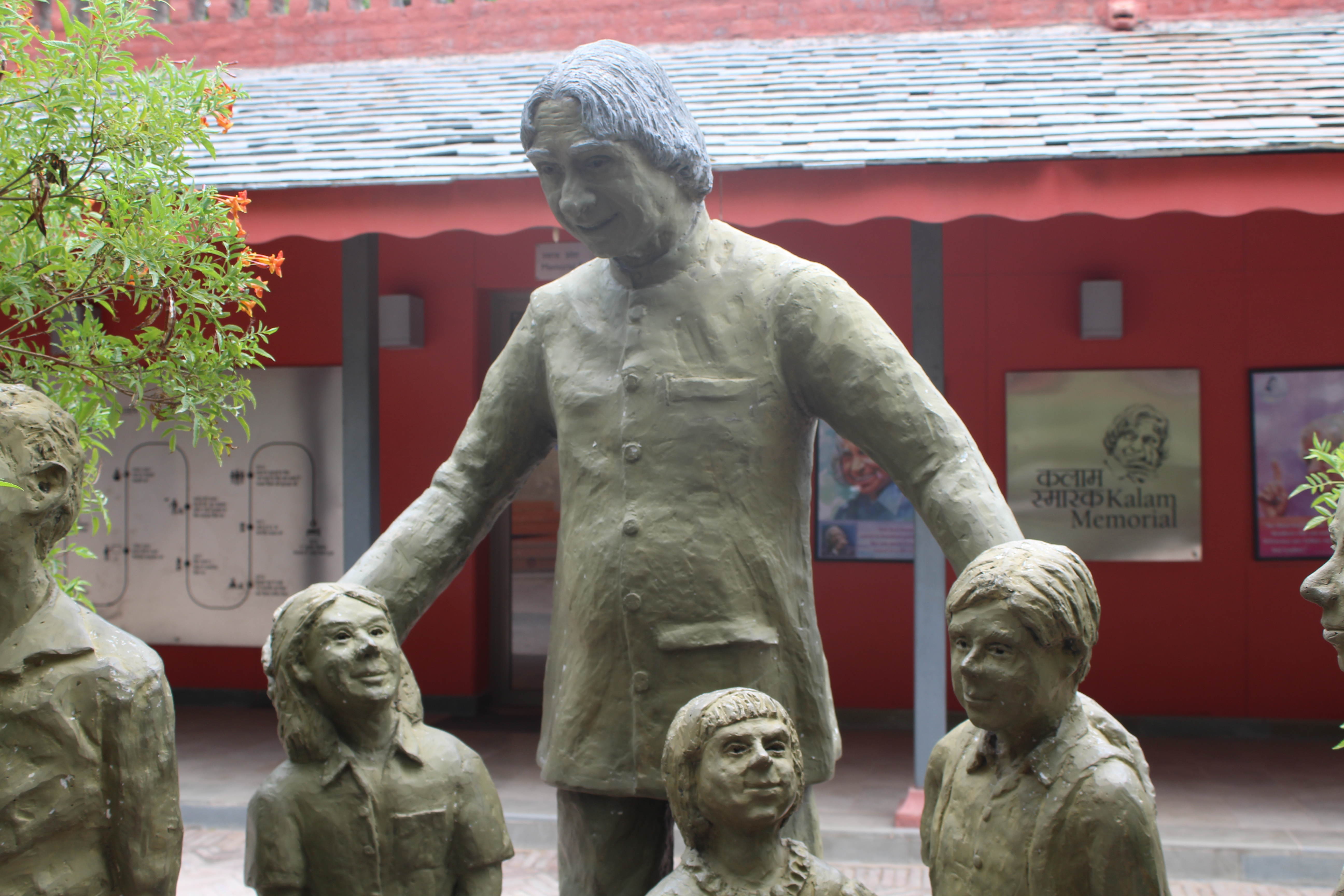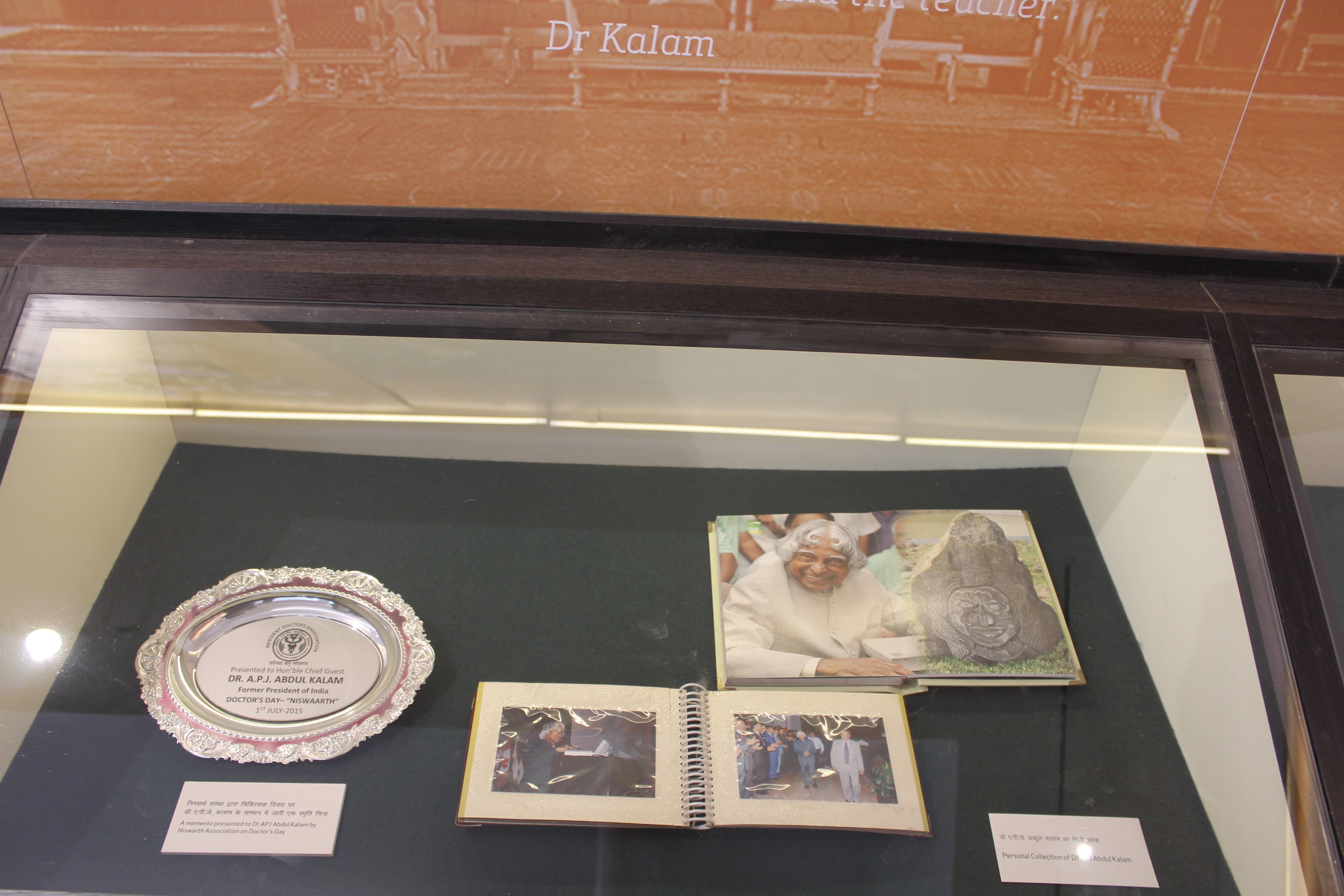The Kalam Memorial was established on July 30, 2016 by the Delhi Government to commemorate the life and teachings of the beloved former president of India—Dr A.P.J. Abdul Kalam. After his death in 2015, the government—at the request of Dr Kalam's family as well as prominent personalities including veteran journalist Bhagwan Singh—sought to preserve his belongings in a place where people could learn about his life and seek inspiration from his achievements. Initially, all the items were preserved in a house on 10 Rajaji Marg, which was to be converted into a ‘Knowledge Centre’—a library cum museum dedicated to Dr Kalam. However, the plan for that conversion fell through and the memorial came to be situated where it is now.
The memorial holds an array of Dr Kalam's personal items, including his clothes, office supplies and books from his personal collection. Paintings made by Dr Kalam's admirers, especially children, adorn the walls of the museum. Large panels containing information about various aspects of his life contextualise the artefacts on display for visitors. The museum is maintained and funded by the Delhi Government, the Delhi Tourism and Transportation Development Corporation (DTTDC) and the Dr A.P.J. Abdul Kalam International Foundation (AKIF), which also manages other memorials/museums on Dr Kalam in other parts of the country
A must-see artefact in the museum, which depicts Dr Kalam’s musical abilities, is his veena. This is foregrounded and highlighted by an intricate stone bust of Dr Kalam. Because of the focus on all his scholarly pursuits and professional achievements, his love for music is often ignored, and this section serves to highlight just that. Yet another significant attraction includes a collection of stone statues in the centre of the courtyard, depicting Dr Kalam with the people he loved the most—little children.
28.5734752, 77.2060792














2. The outer façade and the entrance to the museum-memorial are built in the style of a traditional village house in Tamil Nadu, replete with column-like pillars and a tiled sloping roof.
3. The museum is children-friendly. The tour begins with short video screenings, the display texts are written in simple language and the annual birthday celebrations involve children participating in various activities. This is in line with the objective of keeping Dr Kalam’s legacy and memory alive, especially among children.
